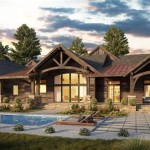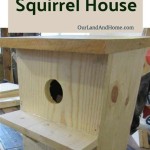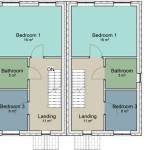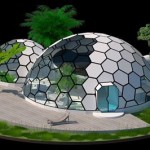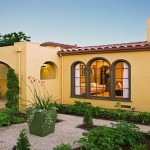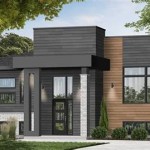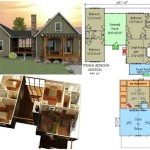Traditional brick house plans provide a timeless and architectural style that emphasizes quality materials, durability, and aesthetic appeal. These plans feature the use of bricks as the primary building material, creating sturdy and elegant homes that have stood the test of time. A classic example of a traditional brick house is the Georgian style, characterized by its symmetrical facade, rectangular shape, and prominent front door.
With their timeless design and proven durability, traditional brick house plans continue to be popular choices for homeowners seeking a classic and sophisticated aesthetic. In the following sections, we delve into the key elements, design considerations, and construction techniques used in these enduring architectural gems.
Traditional brick house plans offer a range of advantages that make them enduringly popular:
- Timeless beauty
- Exceptional durability
- Low maintenance
- Fire resistance
- Energy efficiency
- Sound insulation
- Pest resistance
- Versatility
- Resale value
These qualities make traditional brick house plans a sound investment for homeowners seeking a classic and enduring home.
Timeless beauty
Traditional brick house plans embody a timeless beauty that transcends architectural trends and fads. The enduring appeal of brick as a building material lies in its classic aesthetic and inherent qualities:
Rich texture and color: Bricks come in a wide range of textures, from smooth to rough, and colors, from warm reds to deep browns. This versatility allows architects to create visually stunning facades that complement any landscape or architectural style. The natural variations in brick’s texture and color add depth and character to a home’s exterior, creating a unique and inviting ambiance.
Classic lines and proportions: Traditional brick house plans often feature classic lines and proportions that have been passed down through centuries of architectural history. The symmetrical facades, rectangular shapes, and prominent front doors create a sense of order and harmony. These timeless design elements never go out of style, ensuring that a traditional brick house remains a thing of beauty for generations to come.
Enduring materials: Brick is an incredibly durable material that can withstand the elements and the test of time. Unlike wood or vinyl, brick does not rot, warp, or fade, making it a low-maintenance and long-lasting choice for home exteriors. The timeless beauty of a traditional brick house is further enhanced by the fact that it will retain its aesthetic appeal for decades without the need for major renovations or repairs.
In addition to its inherent qualities, the timeless beauty of traditional brick house plans is also due to their versatility. Brick can be used to create a wide range of architectural styles, from classic Georgian to modern contemporary. This adaptability ensures that a traditional brick house can fit seamlessly into any neighborhood, whether it is a historic district or a newly developed subdivision.
Exceptional durability
Traditional brick house plans are renowned for their exceptional durability, a quality that stems from the inherent properties of brick as a building material:
Strength and resilience: Bricks are incredibly strong and resilient, able to withstand significant forces without breaking or cracking. This makes them highly resistant to damage from impact, such as hail, wind-borne debris, and even earthquakes. Unlike other exterior materials like wood or vinyl, brick does not rot, warp, or buckle, ensuring that a traditional brick house can endure the elements and maintain its structural integrity for generations.
Fire resistance: Brick is a non-combustible material, meaning that it does not catch fire or contribute to the spread of flames. This makes traditional brick house plans highly resistant to fire damage, providing peace of mind to homeowners in the event of a fire. The fire resistance of brick also reduces the risk of structural failure in the event of a fire, as the brick walls will remain intact and provide support to the rest of the house.
Pest resistance: Bricks are not susceptible to damage from pests, such as termites or carpenter ants, which can infest and weaken other types of exterior materials. This makes traditional brick house plans a low-maintenance choice for homeowners, as they do not need to worry about costly repairs or replacements due to pest damage.
Weather resistance: Bricks are highly resistant to weathering, including exposure to rain, snow, and extreme temperatures. The dense and porous nature of brick allows it to absorb and release moisture without losing its strength or integrity. This makes traditional brick house plans well-suited for a variety of climates, from hot and humid to cold and snowy.
The exceptional durability of traditional brick house plans translates to significant benefits for homeowners. Brick homes require less maintenance and repairs over time, leading to long-term cost savings. They are also more resistant to damage from natural disasters, providing peace of mind and protecting the investment in one’s home.
Low maintenance
Traditional brick house plans offer significant advantages in terms of low maintenance, making them a practical choice for busy homeowners and those seeking a hassle-free lifestyle:
- Durable exterior: Unlike wood or vinyl, brick does not require regular painting or staining to maintain its appearance. The durable nature of brick means that it can withstand the elements and retain its beauty for decades without the need for major repairs or replacements.
- Pest resistance: Bricks are not susceptible to damage from pests, such as termites or carpenter ants, which can infest and weaken other types of exterior materials. This eliminates the need for costly pest control treatments and repairs, saving homeowners time and money.
- Easy cleaning: Brick exteriors are easy to clean and maintain. Dirt and grime can be easily removed with a simple washing using a hose or pressure washer. The non-porous nature of brick prevents the accumulation of dirt and mold, further reducing maintenance requirements.
- Energy efficiency: Brick homes are naturally energy-efficient due to the thermal mass of brick. Brick walls absorb and store heat during the day, releasing it slowly at night. This helps to regulate indoor temperatures, reducing the need for heating and cooling systems. The energy efficiency of brick homes can translate to lower utility bills and a more comfortable living environment.
The low maintenance requirements of traditional brick house plans make them an ideal choice for homeowners who value their time and resources. By choosing a brick home, homeowners can enjoy a beautiful and durable exterior that requires minimal upkeep, leaving them more time to focus on the things that matter most.
Fire resistance
Traditional brick house plans offer exceptional fire resistance due to the inherent properties of brick as a building material:
Non-combustible material: Brick is a non-combustible material, meaning that it does not catch fire or contribute to the spread of flames. This makes traditional brick house plans highly resistant to fire damage, providing peace of mind to homeowners in the event of a fire. Unlike wood or vinyl, which are highly flammable, brick will not ignite or release toxic fumes when exposed to fire.
Fire resistance ratings: Brick walls have been tested and proven to provide high fire resistance ratings. The fire resistance rating of a wall is measured in hours, and it indicates how long the wall can withstand a fire before it fails. Brick walls can achieve fire resistance ratings of up to 4 hours, which means they can contain a fire for an extended period of time, giving occupants ample time to evacuate and firefighters time to extinguish the blaze.
Structural stability: In the event of a fire, brick walls maintain their structural integrity, preventing the collapse of the building. This is because brick is a strong and durable material that can withstand high temperatures without losing its strength. The structural stability of brick walls during a fire provides a safe haven for occupants and allows firefighters to focus on extinguishing the blaze without the risk of the building collapsing.
Reduced risk of smoke and toxic fumes: Brick walls do not release toxic fumes when exposed to fire, unlike some other building materials. This is important because smoke and toxic fumes can be deadly in a fire. By choosing a traditional brick house plan, homeowners can reduce the risk of smoke and toxic fume inhalation, creating a safer environment for their families.
The fire resistance of traditional brick house plans is a crucial safety feature that provides peace of mind to homeowners and protects their investment. By choosing a brick home, homeowners can rest assured that their home will be well-protected in the event of a fire, giving them valuable time to evacuate and ensuring the safety of their loved ones.
Energy efficiency
Traditional brick house plans offer exceptional energy efficiency due to the unique properties of brick as a building material:
Thermal mass: Brick has a high thermal mass, which means it can absorb and store a large amount of heat energy. This thermal mass helps to regulate indoor temperatures, reducing the need for heating and cooling systems. In the summer, brick walls absorb heat from the sun during the day and release it slowly at night, keeping the house cool and comfortable. In the winter, brick walls absorb heat from the sun and indoor heating sources, releasing it gradually to maintain a warm and cozy indoor environment.
Insulation: Brick walls provide excellent insulation, helping to keep the interior of the house warm in the winter and cool in the summer. The dense and porous nature of brick traps air pockets, which act as a natural insulator. This reduces heat transfer between the interior and exterior of the house, minimizing energy loss and reducing the need for heating and cooling.
Airtightness: Brick walls are inherently airtight, preventing drafts and air leaks. This airtightness helps to maintain a comfortable indoor temperature and reduces energy loss. Proper sealing and insulation around windows and doors further enhance the airtightness of the house, maximizing energy efficiency.
Passive solar design: Traditional brick house plans can be designed to take advantage of passive solar energy. By orienting the house to face south and incorporating large windows on the south-facing side, homeowners can maximize heat gain during the winter months. The thermal mass of the brick walls will absorb and store the sun’s heat, reducing the need for heating systems.
The energy efficiency of traditional brick house plans translates to significant savings on energy bills for homeowners. By choosing a brick home, homeowners can enjoy a comfortable and energy-efficient living environment while reducing their environmental impact and utility costs.
Sound insulation
Traditional brick house plans offer exceptional sound insulation due to the inherent properties of brick as a building material:
- Mass and density: Bricks are dense and have a high mass, which helps to block sound waves from entering or leaving a room. The greater the mass of a wall, the more effective it is at reducing sound transmission.
- Porosity: Bricks are porous, meaning that they contain tiny air pockets. These air pockets help to absorb and dissipate sound waves, further reducing sound transmission.
- Multiple layers: Traditional brick house plans often incorporate multiple layers of brickwork, with an air gap between each layer. This layered construction creates a sound barrier that effectively blocks sound waves from traveling through the walls.
- Solid construction: Brick walls are solid and do not have any hollow spaces or cavities. This solid construction prevents sound waves from resonating within the walls and amplifying sound transmission.
The sound insulation provided by traditional brick house plans creates a quiet and peaceful living environment for homeowners. By choosing a brick home, homeowners can enjoy a sanctuary where they can relax, sleep, and entertain without being disturbed by outside noise.
Pest resistance
Traditional brick house plans offer exceptional pest resistance due to the inherent properties of brick as a building material:
- Impermeable surface: Bricks are non-porous and have a smooth surface, which makes them difficult for pests to penetrate. Unlike wood or vinyl, which can be easily chewed or scratched by pests, brick provides a solid barrier that prevents pests from entering the home.
- Lack of food sources: Bricks do not provide a food source for pests, unlike wood or other organic materials. This makes brick homes less attractive to pests, as they are unable to find sustenance within the structure.
- Repellent properties: Some types of bricks, such as red bricks, contain natural minerals that have insect repellent properties. These minerals create an inhospitable environment for pests, further reducing the risk of infestation.
- Solid construction: Traditional brick house plans typically use solid brick construction, which eliminates cracks and crevices where pests can hide and nest. The dense and solid nature of brick walls makes it difficult for pests to find entry points and establish colonies within the home.
The pest resistance of traditional brick house plans provides homeowners with peace of mind, knowing that their homes are less susceptible to infestation and damage caused by pests. By choosing a brick home, homeowners can enjoy a pest-free living environment, reducing the need for chemical treatments and costly repairs.
Versatility
Traditional brick house plans offer exceptional versatility, allowing homeowners to create a wide range of architectural styles and designs to suit their individual tastes and preferences:
Adaptability to various architectural styles: Brick is a versatile material that can be used to create a variety of architectural styles, from classic to modern. Traditional brick house plans can be designed to incorporate elements of Georgian, Victorian, Colonial, and Craftsman styles, among others. The timeless appeal of brick allows it to blend seamlessly with different architectural periods and design trends.
Customization options: Brick homes offer a high degree of customization, allowing homeowners to personalize their homes to reflect their unique style. Bricks come in a range of colors, textures, and sizes, providing endless possibilities for creating custom facades. Homeowners can choose from a variety of bricklaying patterns, such as running bond, Flemish bond, and herringbone, to add visual interest and character to their homes.
Integration with other materials: Brick can be beautifully combined with other materials, such as stone, wood, and stucco, to create a unique and visually appealing exterior. This versatility allows homeowners to mix and match different materials to achieve a desired aesthetic, whether it is a rustic farmhouse, a contemporary masterpiece, or a classic Victorian home.
Suitability for various climates: Traditional brick house plans are well-suited for a variety of climates, from hot and humid to cold and snowy. The thermal mass of brick helps to regulate indoor temperatures, keeping homes cool in the summer and warm in the winter. The durability of brick also makes it resistant to extreme weather conditions, such as hurricanes and earthquakes.
The versatility of traditional brick house plans empowers homeowners to create unique and personalized homes that reflect their individual tastes and lifestyles. By choosing a brick home, homeowners gain the freedom to explore a wide range of architectural styles, customize their homes to their heart’s content, and enjoy a durable and beautiful home that will stand the test of time.
Resale value
Traditional brick house plans offer exceptional resale value, making them a smart investment for homeowners:
High demand: Brick homes are in high demand among homebuyers due to their timeless appeal, durability, and low maintenance requirements. The enduring popularity of brick as a building material ensures that brick homes will continue to be sought after by buyers in the future.
Proven value: The resale value of brick homes has been consistently high over time, outperforming other types of homes in many markets. This is because brick homes are seen as a safe and reliable investment, offering buyers peace of mind and a solid return on their investment.
Premium pricing: Brick homes typically command a premium price in the real estate market compared to homes with other exterior materials. This is due to the perceived value and desirability of brick homes among buyers.
Appreciation potential: The resale value of brick homes tends to appreciate at a higher rate than other types of homes. This is because brick homes are seen as a long-term investment, and their durability and low maintenance requirements make them attractive to buyers who are looking for a home that will retain its value over time.
The exceptional resale value of traditional brick house plans provides homeowners with financial security and peace of mind. By choosing a brick home, homeowners can be confident that their investment will be protected and that they will be able to recoup their investment when they sell their home in the future.










Related Posts

